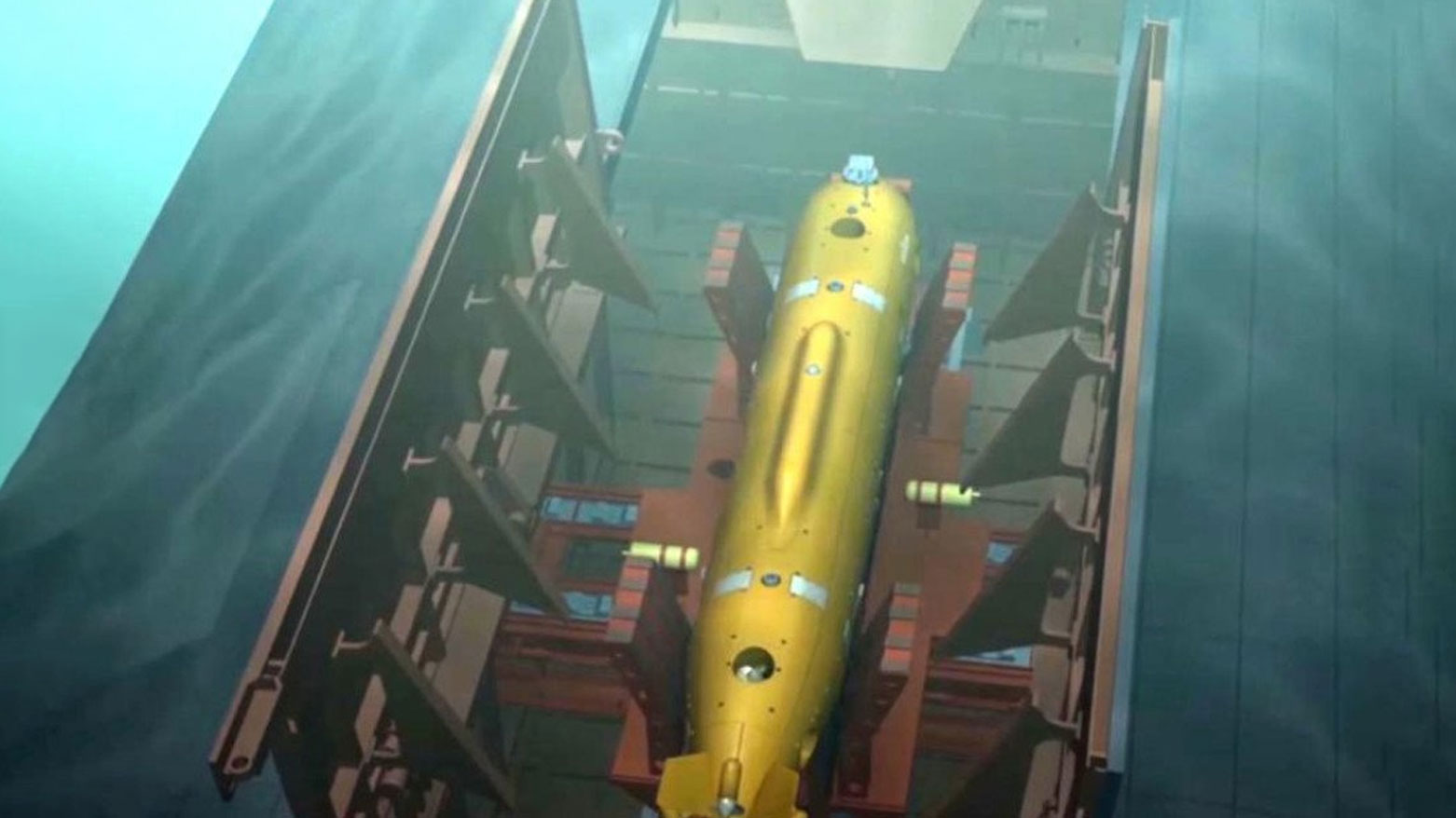Putin Announces Successful Test of Nuclear-Powered "Poseidon" Drone
Putin announced Russia successfully tested the nuclear-powered "Poseidon" underwater drone, capable of carrying a two-megaton warhead. This follows recent tests of the Burevestnik missile, despite US President Trump's warnings to halt provocations and focus on ending the Ukraine war.

ERBIL (Kurdistan24) – Russian President Vladimir Putin announced Wednesday that Moscow had successfully tested a nuclear-capable, nuclear-powered underwater drone, marking the country’s second nuclear weapons test in less than a week and directly defying U.S. President Donald Trump’s warnings to halt such provocations.
Speaking during a televised visit to a military hospital treating Russian soldiers wounded in Ukraine, Putin said the underwater drone — codenamed Poseidon — represents a new generation of strategic weapons “impossible to intercept.”
“Yesterday, another test was conducted for another prospective system — the unmanned underwater device Poseidon, also equipped with a nuclear power unit,” Putin declared.
He emphasized that the drone torpedo can travel faster than any conventional submarine and reach “any continent in the world,” adding that “it is unlikely that anything similar will appear in the near future.”
According to the Russian state news agency TASS, the Poseidon can operate at depths exceeding one kilometer and travel at speeds up to 70 knots while remaining undetectable. The weapon, first tested in 2018, is capable of carrying a nuclear warhead of up to two megatons, making it one of the most destructive underwater systems ever developed.
Putin’s announcement came just days after he personally oversaw the test of another nuclear-capable weapon — the Burevestnik cruise missile, which he described as having an “unlimited range.”
That earlier test drew a sharp rebuke from President Trump, who said the move was “not appropriate” and urged Putin to focus instead on ending the ongoing war in Ukraine.
“He ought to get the war in Ukraine ended,” Trump said following Sunday’s missile launch. “A war that should have taken one week is now soon in its fourth year. That’s what he ought to do instead of testing missiles.”
The U.S. president last week cancelled a planned summit with Putin in Budapest, citing Moscow’s unwillingness to compromise on a ceasefire. Trump, who has sought to secure a peace deal since returning to office in January, has grown increasingly frustrated over what he described as the Russian leader’s refusal to “engage seriously” in peace talks.
Washington also imposed new sanctions on Russia’s two largest oil companies, accusing Moscow of prolonging the war while “offering no credible path to peace.”
Putin’s renewed weapons testing underscores his determination to project military strength amid global pressure, signaling that Russia’s defense program will proceed regardless of Western disapproval.
The Poseidon and Burevestnik systems, both unveiled by Putin during a fiery anti-Western speech in 2018, represent the Kremlin’s ambition to maintain strategic parity with the United States and NATO. The Poseidon, in particular, has been touted by Russian defense officials as a “doomsday” deterrent capable of evading missile defenses and delivering catastrophic underwater strikes.
While analysts view these tests as part of Russia’s long-term modernization strategy, the timing — coinciding with mounting Western fatigue over Ukraine — appears designed to remind Washington and Brussels of Moscow’s enduring military leverage.
Putin’s latest remarks also came amid reports that the U.S. is scaling down parts of its military presence in Europe — a move that, although officially denied as a withdrawal, has amplified concerns about NATO’s deterrence posture.
On Wednesday, the U.S. Army in Europe and Africa confirmed that an infantry brigade combat team and an airborne division will redeploy from NATO’s eastern flank back to their home base in Kentucky. The units, stationed in Romania, Bulgaria, Slovakia, and Hungary, will not be replaced — a decision first disclosed by Bucharest’s Ministry of Defense.
“This is not an American withdrawal from Europe or a signal of lessened commitment to NATO and Article 5,” the U.S. command said from its German headquarters. “Rather, this is a positive sign of increased European capability and responsibility.”
However, NATO officials privately voiced unease, warning that even a modest drawdown could embolden Russia at a volatile moment. The alliance stressed that the adjustment “will not change the security environment in Europe,” but many European capitals fear a gradual erosion of U.S. presence could alter the regional balance of power.
Trump, who has long criticized NATO allies for not meeting defense spending targets, has reiterated that Europe must take greater responsibility for its own security. But the prospect of reduced U.S. deployments — arriving just as Russia flaunts new nuclear weaponry — has injected new uncertainty into the alliance’s future cohesion.
The back-to-back Russian nuclear tests and Washington’s recalibration of troop deployments present a complex picture of shifting deterrence dynamics. While Putin celebrates military breakthroughs that defy Western pressure, the U.S. and its allies must navigate the optics of reduced forward presence at a time when Moscow appears intent on signaling strength rather than restraint.
Putin’s defiance and Trump’s frustration — one testing new nuclear technologies, the other questioning NATO’s commitments — encapsulate the deep geopolitical divide that continues to define the post-Ukraine war landscape.
